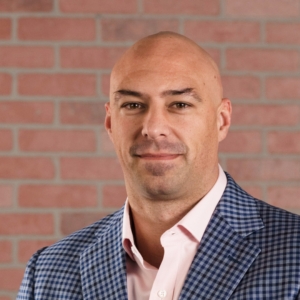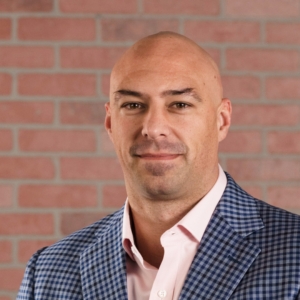Adaptability
Guest writer Alex Kraft tackles the importance of adaptability for all of us in our businesses, and our lives.
In order to Succeed you have to be Adaptable.
What do Nick Saban, Domino’s Pizza, and Ritchie Brothers Auctioneers have in common? Adaptability.
Every equipment dealer everywhere has uttered the words, ‘because that’s the way we’ve always done it’. I’ve heard it a million times and I may have said it once or twice. Adaptability is becoming a larger separator between the dominant players in an industry and the middle/lower tier companies. I’ve always been impressed by market leaders that continually work to improve and adapt to changing market conditions even when they don’t have much incentive to.
As a huge sports fan, I’ve always enjoyed the parallels between sports and business. Nick Saban is undoubtedly the most successful college football coach ever, having won seven national championships. For those who don’t follow college football closely, they may view him as a hard ass, but to me his success stems from a willingness to adapt. Saban’s early teams were the conservative type, focusing on suffocating defense and a run-first offensive approach that limited mistakes. No one could argue with the approach as SEC titles and national titles piled up. If there ever was a person who could rest on his laurels and point to the “this is the way we’ve always done it”, it was Nick Saban. But what makes Coach Saban a legend is that he’s never satisfied and he’s constantly seeking improvement. Even with his extraordinary success, he looked at the teams that beat Alabama and noticed similarities with their offensive schemes. The rules had changed in the early 2010’s to lean more towards the offense, specifically the spread passing scheme. Instead of being stubborn, Saban leaned into the new age offensive schemes and Alabama has become the most dangerous passing program in the country over the past 4-5 years (averaging almost 48 points per game!) with 11 1st round picks on offense since 2019. Football fans have all seen the examples of the legendary coach in his last few years struggling to adjust to rule changes, differences in athletes from prior decades, and the overall style of the sport. It creates this sad state where we all think to ourselves ‘the game has passed him by’. I don’t ever see anyone suggesting that about Nick Saban because of his incredible ability to be open minded and adaptable.
Domino’s Pizza was near bankruptcy in 2008 as its share price dropped below $3 per share (today it’s >$400 per share!) and they were losing franchise locations. This led to a few changes including the launch of some new products and a completely new pizza recipe. Next, they launched a campaign with a promise to deliver pizzas in “30 minutes or less”. When the competition just copied the program, Domino’s was searching for an edge. The true catalyst that changed the entire company’s future was their ability to adjust to the smartphone revolution and embrace digital ordering. In 2011, then-CEO Patrick Doyle challenged the internal team to create tools to allow customers to order a pizza while waiting at a stoplight. The average stoplight takes 17 seconds to turn green and Domino’s has 34 million different possible pizza combinations. Impossible? Quite the opposite. Anyone who’s ordered a Domino’s pizza in the past 5 years can attest to the ease at the entire process from order to receipt. It isn’t just about launching an ‘app’. Domino’s was at the forefront of the “pizza tracker”, along with experimenting with autonomous delivery vehicles and electric bike deliveries in certain markets. The Domino’s AnyWare program allows customers to order directly from consumer 3rd party ‘apps’, such as Slack, Google Home, Amazon Alexa, a text message, a Smart TV, or even a tweet! Today, over 60% of their orders come from digital channels. With such an intense focus on customer experience, Domino’s launched an ‘Innovation Garage’ to continually test and implement new ideas. This culture has changed the entire perception of the company, to where they are more often characterized as a tech company than their standing as the world’s largest pizza company.
Ritchie Brothers Auctioneers is a great construction industry example of adaptability. I just attended the big February sale in Orlando as I have every year since 2008. The RB Auction has become a destination, a networking event for so many in the industry over the years. One would think that a pandemic such as Covid-19, which brought ‘social distancing’ and outright travel restrictions would absolutely crush a company that holds in-person auctions, right? Wrong. Long before Covid-19 struck, Ritchie Brothers Auctioneers laid the foundation for online bidding at their in-person auctions. Ritchie introduced online bidding back in 2003, but it was their IronPlanet acquisition in 2017 that cemented their leadership position in selling equipment online. I was surprised to learn that prior to Covid, Ritchie’s online sales exceeded their in-person sales. Having been in this industry since 2004, I can’t imagine how much resistance RB must have had internally when the idea of selling used equipment online was posed. Especially for a company that started in 1958 auctioning furniture at a rented hall. It seems like a stroke of genius today with our current conditions, but those seeds were planted long before it was popular.
The 3 examples above are success stories. Unfortunately, there are plenty of examples of the opposite, of rigid companies like Blockbuster movie rentals. At its peak in the late 1990’s, Blockbuster had over 9,000 video-rental stores, employed over 84,000 people, and had 65 million customers. The story is well known now that Netflix basically begged Blockbuster to buy their fledgling operation in early 2000 for only $50 million. Blockbuster turned them down and today Netflix is worth $195 Billion, and Blockbuster is out of business. This is the ironic part to me: if I’m chasing a competitor, I’d want them to keep everything the same. Please don’t change. Yet that seems to be the trap that most in the equipment industry have fallen into. If you’re 3rd/4th/5th in market position and you’re not pursuing new ways to do business, what do you think happens next? No one just falls into a better market position by staying the same. Learn to adapt or you may just be holding a position for someone else to come and grab on their way up.










